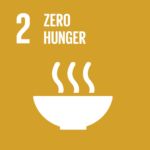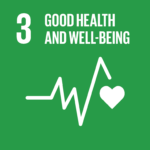As global mean temperatures rise, particularly in tropical regions like Asia, the risk of foodborne diseases is also increasing.
JAKARTA — Asia’s food system is grappling with a critical triple threat of contamination—microbiological, chemical, and physical—that experts warn is being exacerbated by climate change, putting national food security at significant risk. This pressing concern was highlighted by Professor Dr. Purwiyatno Hariyadi, a senior scientist at the Southeast Asia Food and Agricultural Science and Technology (SEAFAST) Center and former Vice President of the Codex Alimentarius Commission, during the recent Fi Asia Conference in Jakarta, Indonesia.
RELEVANT SUSTAINABLE GOALS




The Crucial Link Between Food Safety and Food Security
Professor Purwiyatno stressed the fundamental importance of food safety as a prerequisite for food security, arguing that unsafe food effectively nullifies the concept of food security. “Without food safety, there can be no food security because there can essentially be no food if it is not safe to eat,” he stated. He underscored that food safety has far-reaching implications, not only for public health but also for economic stability and international trade relations.
As global mean temperatures rise, particularly in tropical regions like Asia, the risk of foodborne diseases is also increasing. “The alarming rate at which global mean temperatures are accelerating upwards means that the risk of foodborne diseases is accelerating as well,” Purwiyatno warned.
The Three Pillars of Contamination: Microbial, Chemical, and Physical
Microbiological Contamination
Microbiological hazards, such as salmonellosis and Campylobacter infections, are particularly sensitive to temperature changes. Studies have shown that salmonellosis cases in Europe increase by 5% to 10% with every 1-degree Celsius rise in weekly average temperatures. Purwiyatno noted that similar trends are being observed elsewhere, including Asia, as higher temperatures provide an ideal environment for harmful microbes to thrive.
Chemical Contamination
Chemical hazards are another significant concern, especially with the increased runoff of pesticides, heavy metals, and other toxins into water bodies due to rising temperatures. These contaminants are then absorbed by plants and accumulate in seafood, posing serious health risks. For instance, phycotoxins produced by certain algae can cause Ciguatera Fish Poisoning, leading to symptoms such as nausea, diarrhea, extreme itching, and headaches.
Chemical hazards are another significant concern, especially with the increased runoff of pesticides, heavy metals, and other toxins into water bodies due to rising temperatures. These contaminants are then absorbed by plants and accumulate in seafood, posing serious health risks. For instance, phycotoxins produced by certain algae can cause Ciguatera Fish Poisoning, leading to symptoms such as nausea, diarrhea, extreme itching, and headaches.
“In plants, higher temperatures and moisture levels promote mycotoxin growth, which can lead to direct food poisoning from contaminated crops or indirect poisoning through the consumption of animals that have eaten these crops,” Purwiyatno explained. A study on methylmercury in fish found that a 1-degree Celsius rise in sea temperature led to a 4.4% increase in methylmercury concentration, posing significant risks to the human nervous system if consumed excessively.
Physical Contamination
Physical hazards, including microplastics, are also exacerbated by climate change. Extreme weather events such as floods, droughts, and storms increase the likelihood of physical contaminants entering the food supply chain. This exposes consumers to waste and debris, making the food supply chain vulnerable to physical contamination.
Physical hazards, including microplastics, are also exacerbated by climate change. Extreme weather events such as floods, droughts, and storms increase the likelihood of physical contaminants entering the food supply chain. This exposes consumers to waste and debris, making the food supply chain vulnerable to physical contamination.
Economic Impact of Food Safety Failures
Beyond the immediate health risks, the economic ramifications of food safety failures are profound. Globally, food safety hazards cause 600 million illnesses and 420,000 deaths annually, resulting in the loss of approximately 33 million disability-adjusted life years (DALY). Professor Purwiyatno highlighted the economic toll, citing that these food safety issues have led to an estimated $110 billion in economic losses each year.
“This directly impacts economies and trade, which cannot be ignored,” he said. The economic fallout from food safety hazards is not just a public health concern but also a substantial financial burden on nations already grappling with food security challenges.
Professor Purwiyatno’s message was clear: addressing food safety is not optional but a necessity for achieving food security. As climate change continues to escalate the risks associated with food contamination, there is an urgent need for robust measures to ensure the safety of food supplies.
“Countries must recognize that food safety measures are integral to any food security strategy,” he urged, emphasizing the critical need for comprehensive policies and interventions to mitigate these growing threats.
Lead image courtesy of Science Photo Library.





This Post Has One Comment
Wow amazing blog layout How long have you been blogging for you made blogging look easy The overall look of your web site is magnificent as well as the content
Comments are closed.